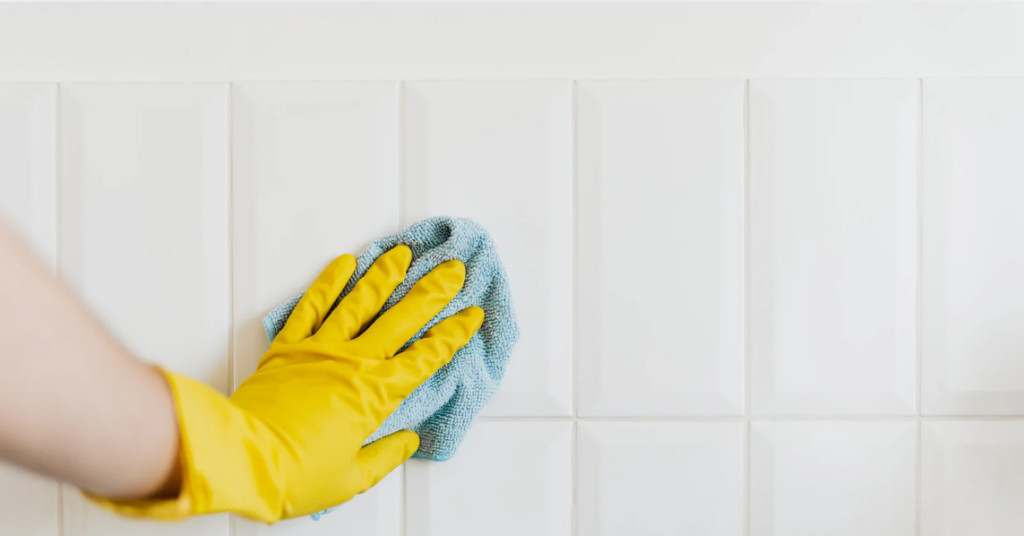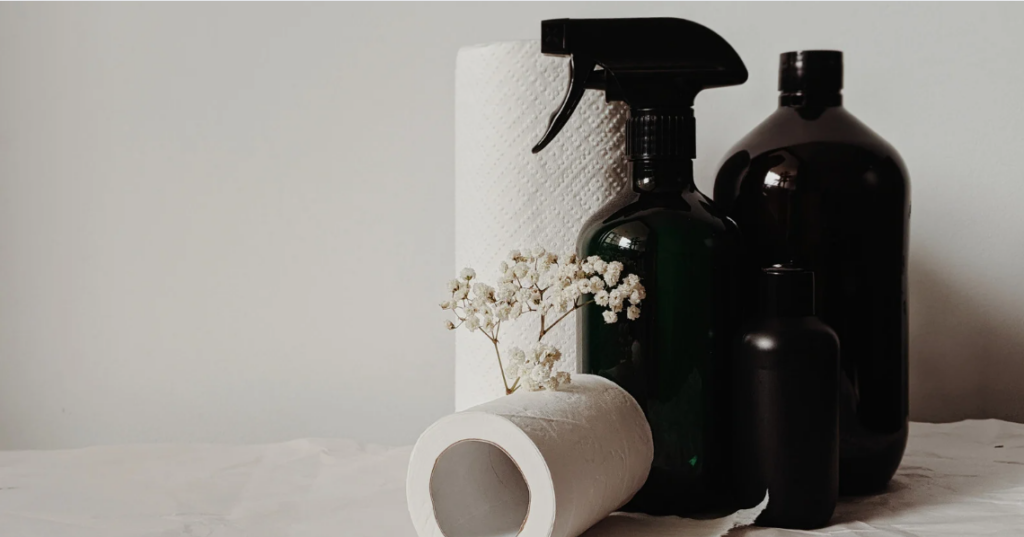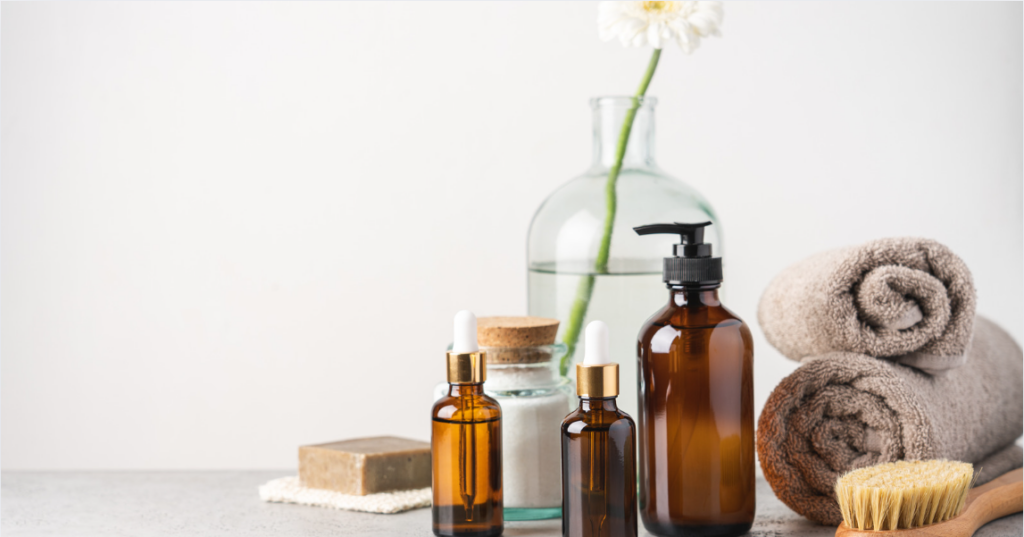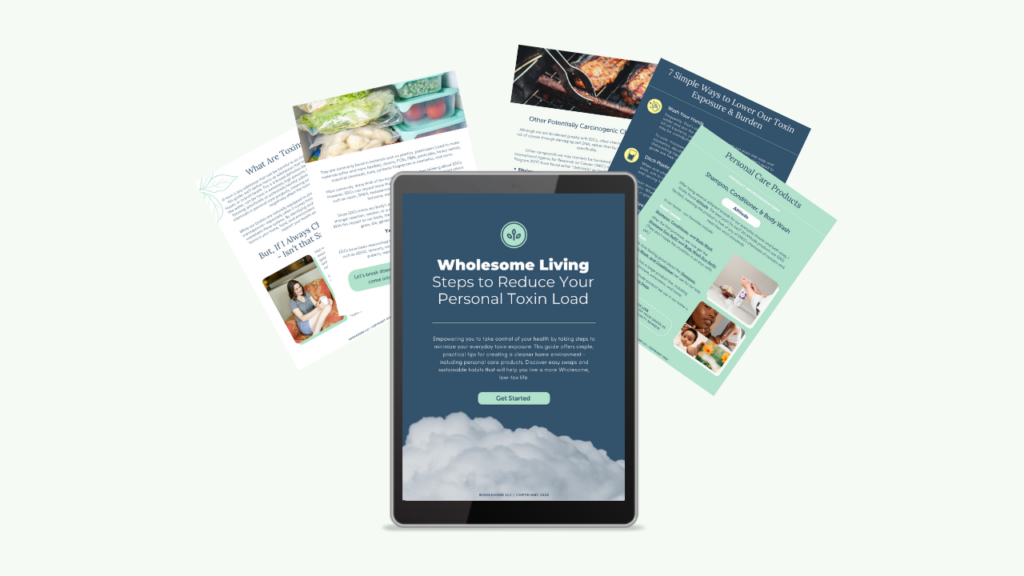The Wholesome Journey - Group Nutrition Coaching Program
Mentorship Program, 1:1 Nutrition Coaching with Alison
What do you want to learn more about?
Program Login
Podcast Features
December 3, 2024
Alison Tierney, MS, RD, CD, CSO
Alison is a registered dietitian, board-certified in oncology nutrition, and a cancer thriver. Her expertise in oncology nutrition and personal experience with her own cancer diagnosis and its treatment provide her with the unique perspective of being able to relate to her clients on an entirely different level. Her content is consistently focused on evidence-based guidelines and seeks to increase the awareness of the power of nutrition to complement traditional cancer therapies.
- Alison Tierney, MS, RD, CD, CSO
- Alison Tierney, MS, RD, CD, CSO
- Alison Tierney, MS, RD, CD, CSO
- Alison Tierney, MS, RD, CD, CSO
- Should We Be Concerned with Environmental Exposures When it Comes to Cancer Risk?
- What are Cancer Causing Chemicals?
- What You Need to Know First
- What Chemicals May Increase Cancer Risk?
- Simple, Actionable Steps You Can Take to Reduce Your Exposure to Cancer Causing Chemicals
- Avoiding the Act of Obsessing Over Cancer Causing Chemicals
- How to Further Simplify Your Journey to a Cleaner, Low-Tox Home
- References:
Unfortunately, cancer causing chemicals are all around us. Thankfully, there are steps we can take individually and inside our own homes to reduce our everyday exposure!
Are you in a state of overwhelm and unsure where to start when it comes to what’s top priority in changing out cleaning, food storage, and/or personal care products?
As a cancer survivor myself, I get it! I was there, too. Certainly, as I continue on in my survivorship journey, I want to ensure I leave no stone unturned when it comes to controlling the controllables when it comes to reducing my cancer risk.
Although it would be nearly impossible to cover the few hundred substances that organizations consider potential cancer causing chemicals, or “known, or reasonably anticipated, to cause cancer in humans” per the National Toxicology Program (NTP) (1), this article will review some of the simple steps you can take to reduce the toxins within your own home that may increase our risk for cancer.
Let’s dive in!

Should We Be Concerned with Environmental Exposures When it Comes to Cancer Risk?
Cancer and how it develops is an incredibly complex and multifactorial process – meaning it typically isn’t just one thing that causes cancer.
Cancer is never caused by just one thing.
Some of the factors that increase cancer risk are modifiable, meaning we can control or change them – such as a healthy diet. Others, such as inherited genetic mutations (a gene that comes from your parent(s)), are non-modifiable and we cannot change them.
Research estimates that between 30 and 50 percent of all cancer cases are preventable through a focus of healthy lifestyle factors that include nutrition, physical activity, and avoiding/reducing environmental exposures (2).
We touch on nutrition big time within this blog (such as Healthy Grilling Options and Health 101: Does Sugar Feed Cancer?), but today we will focus on cancer causing chemicals you can find in many homes (environmental exposures) – and may increase the risk of cancer and its recurrence in humans.
What are Cancer Causing Chemicals?
Environmental exposures can include a laundry list of substances. For example, cigarette smoking contains at least 250 known harmful substances with 65 of these toxic chemical substances known to be a cancer causing chemical and ultimately, increasing cancer risk. Smoking not only significantly increasing one’s risk of lung cancer, but also eleven different types of cancer including the risk of prostate cancer; colorectal cancer; larynx, oral cavity and pharynx cancers; esophageal, pancreatic, bladder, stomach, liver, cervical, and kidney cancers; and acute myeloid leukemia (AML).
The environmental exposures that are rather uncontrollable factors (for the most part on the individual level) include radiation, industrial emissions, pollutants, and more.
For the purpose of this article, we’ll be focusing on controllable factors within the home, such as household products.
What You Need to Know First
But before we go any further, the first thing to know is that how much of an impact an environmental exposure may increase cancer risk is dependent on several factors – such as the amount of exposure, the time of exposure (i.e. infancy vs. adulthood), an individual’s genetic makeup, and more.
Furthermore, it’s important to not become obsessive and ultimately increase fear surrounding the products we use at home. Stress and chronic stress is linked in human clinical studies to a multitude of chronic diseases and stressing over this isn’t helpful!
Within this article – and within all Wholesome programming – we aim to focus on and become more conscious of the choices we can control.
So, if you believe reading this article may increase your stress or fear, it would be better to bookmark this and come back to this article when you are in a place where you find this information empowering – rather than stress inducing.
If you’re ready for empowerment, let’s move on.

What Chemicals May Increase Cancer Risk?
When it comes to reducing cancer risk, there are some chemicals found in everyday products we should be aware of and would be recommended to reduce our exposure, as much as possible.
Many of these chemicals are classified as xenoestrogens, or chemicals that can mimic estrogen in the human body. Furthermore, the term endocrine disrupting compounds (EDCs) are compounds that can mimic hormones within the human body, including estrogen, insulin, melatonin, and other hormones. This means these chemicals may attach to our natural hormone receptors (essentially, where the hormone works and does its job) causing a stronger, weaker, or even completely different action than the natural hormone.
Unfortunately, exactly how certain chemicals may play a role in the human body is relatively unknown since many chemicals have are not tested for how they may or may not impact human health.
Some of the common xenoestrogens and EDCs that have human or animal studies suggesting these chemicals may play a role in increasing cancer risk, especially the risk of breast cancer (3), ovarian cancer, uterine cancer, and other estrogen dependent cancers. These chemicals include (but are not limited to):
- Alkylphenols (4)
- Bisphenol A (BPA) (5)
- Phthalates (6)
Other cancer causing chemicals found within our everyday life may be considered cancer-causing substances since they increase the risk of DNA damage, which in turn may increase the risk of cancer. The International Agency on Research on Cancer (IARC) and the NTP have identified the following (and many more) as “definitely” or “probably” carcinogenic, or cancer-causing substances (7):
- Ethylene Oxide (7)
- Aromatic Amines, such as Heterocyclic Amines (7)
Although it may be impossible to completely eliminate exposure to these chemicals, let’s focus next on some actionable steps you can take to reduce your exposure to these and many other potentially harmful chemicals.
Simple, Actionable Steps You Can Take to Reduce Your Exposure to Cancer Causing Chemicals
1. Be Smart with Plastics and Ditch them When You Can
One of the first things that comes to mind when it comes to plastics is BPA. BPA is a common chemical we have frequent exposure to, primarily through certain plastics.
One way to more easily identify these plastics is that they are commonly have the recycle number 7 on the label. These plastics also commonly contain phthalates, another concerning chemical on our list.
Where You Can Usually Find Them: thermal receipts, the lining of food cans, plastic water bottles.
Tips to Reduce Exposure:
- Use fresh or frozen produce when possible. When using canned foods, such as beans, search for a can marked stating it is not lined with BPA.
- Ditch the receipt when making purchases and when possible.
- Choose glass or stainless steel water bottles, food containers, etc. whenever possible.
- If using plastic products, do not heat them in the microwave or add them to the dishwasher. These compounds leach into food products especially when the plastic is heated.
- Aim to swap plastic bags for reusable, silicone products – like these – that are safer alternatives to plastic.
2. Make Your Own Cleaning Products to Avoid Alkylphenols (& Other Toxins)
Alkylphenols are a group of chemicals which are known as EDCs. They are most commonly found in detergents and cleaners.
Where You Can Usually Find Them: Within cleaning products and detergents that contain (look for these on the label) – propylphenol, butylphenol, amylphenol, heptylphenol, octylphenol, nonylphenol, dodecylphenol, methylphenol, and ethylphenol.

Tips to Reduce Exposure:
- Read the labels of your products and purchase cleaning products without the above listed chemicals.
- For chemical free cleaning, consider making your own, effective at-home cleaning products.
- All-Purpose Citrus Cleaner: 1 part white vinegar, 1 part water, citrus peel.
- Combine the ingredients and allow the citrus to infuse for at least one week. Transfer to a reusable, glass spray bottle.
- Avoid using vinegar on stone or ceramics.
- Combine the ingredients and allow the citrus to infuse for at least one week. Transfer to a reusable, glass spray bottle.
- All-Natural Scrub: Juice from ½ lemon + 4 tablespoons baking soda.
- Make a paste between the lemon juice and baking soda. Apply the mixture to any place that needs a heavy duty scrub.
- Rinse with water and a clean cloth.
- Make a paste between the lemon juice and baking soda. Apply the mixture to any place that needs a heavy duty scrub.
- Streak Free, Natural Glass Cleaner: 250 mL water + 3 tablespoons white vinegar + 60 mg rubbing alcohol.
- All-Purpose Citrus Cleaner: 1 part white vinegar, 1 part water, citrus peel.
3. Choose Healthier Cosmetic and Personal Care Products
Unfortunately, phthalates are classified as EDCs and are incredibly common within not only our plastic products (as mentioned above), but also our cosmetic and personal care products.
Cosmetic products also commonly contain ethylene oxide, so the following tips to reduce exposure also apply to ethylene oxide.
Where You Can Usually Find Them: All over the place! Shower curtains, plastic food packaging (recycle #7), cosmetics, personal care products, fragrances, nail polish, air fresheners, etc.

Tips to Reduce Exposure:
- Aim to avoid personal care products that contain “fragrance” or “perfume”. Look for products made with only pure essential oils.
- Look for products specifically labeled “made without phthalates”.
- Avoid personal care products that contain ethoxylated ingredients. (Refer to the Environmental Working Group’s (EWG’s) database referenced below.)
- Avoid synthetic air fresheners. Specific houseplants, such as spider plants, aloe vera, and bamboo palms, have been shown to absorb harmful toxins and detoxify your home. Consider scenting your home using a diffuser using only pure essential oils.
- Consider using the EWG’s Skin Deep database that can help you decipher between potentially harmful and safe ingredients within care products.
- Avoid first and second-hand cigarette smoke (more specific to ethylene oxide).
4. Reduce or Eliminate Your Intake of Grilled Animal Protein
Heterocyclic amines (HCAs) are compounds that are created when animal protein is cooked at high-temperatures, specifically, anything 350 degrees Fahrenheit or higher. (8,9)
These compounds (HCAs) found within the class of chemicals called polycyclic aromatic hydrocarbons, are considered a group 1 carcinogen. By definition, per the IARC and NTP, a group 1 carcinogen is “carcinogenic to humans”. (10)
Where You Can Usually Find Them: breathing air containing motor vehicle exhaust, cigarette smoke, wood smoke, fumes from asphalt roads, and consuming grilled or charred meats.
Tips to Reduce Exposure:
- Consider swapping animal protein and grill plant protein and/or vegetables instead.
- Consider following the 4 Tips for Healthy Grilling, reviewed here in this blog post.
Avoiding the Act of Obsessing Over Cancer Causing Chemicals
As you can imagine, you could drive yourself obsessed trying to eliminate all cancer causing chemicals within our environment and within your own home.
Instead of focusing on perfection, aim to reduce your exposure where you can and when you can. My approach to nutrition and healthy lifestyle to reduce the risk of cancer and its recurrence is rooted in controlling the controllables and trying to let the rest go.
Progess over perfection, my friend.
And when it comes to trying to revamp your home when it comes to chemical free cleaning, healthy food storage products, and personal care products – consider starting slow and swapping out one new thing here and there.
Keep in mind, the process doesn’t necessarily have to be expensive. You could simply start by:
- Saving a glass peanut butter jar to be storage for overnight oats or soup.
- Creating your own chemical free cleaning products (recipes listed above). These can be an incredibly cost effective solution!
- Consume plant proteins such as tofu, canned beans (or dry beans!), and lentils over beef or chicken. In fact, a recent study demonstrated that overall food costs when consuming a plant-based diet reduced food costs by 16%, or more than $500 over the course of a year (compared to a diet that includes meat, dairy, and other animal products). (11)
- Choose frozen vegetables (especially cruciferous vegetables that are packed with anticancer properties) and fruits over canned, which tend to have more nutrients and are still cost effective – if you’re unable to find or purchase canned foods without a BPA lining.
Here’s to controlling the controllables and reducing our risk in simple ways for a thriving life!
How to Further Simplify Your Journey to a Cleaner, Low-Tox Home
After my own experiences with infertility and cancer, I dedicated countless hours to researching safer, more budget-friendly products—and I’m here to save you that time (and headache!).
My guide, “Wholesome Living – Steps to Reduce Your Personal Toxin Load,” goes deeper into this topic, makes the swap process easier (without the hours Googling) & is packed with exclusive discounts for the best sustainable, low-tox products I use in my own home so you don’t have to spend hours scouring the internet.
Feel empowered to take control of your health with everyday choices. The Wholesome Living Guide shares all of my favorite products for minimizing your personal toxin exposure and creating a healthier, more Wholesome home.
Grab your copy today to start living a more vibrant, low-tox life!
Wholesome LLC’s blog content is reader-supported. Some posts contain affiliate links. If you purchase through these links on our site, we may earn a small commission (at not extra cost to you) to help support this content, and any future content. Thank you for support this site!
References:
- U.S. Department of Health and Human Services. (2021, December 23). Eight Substances Added to 15th Report on Carcinogens. National Institute of Environmental Health Sciences. https://tools.niehs.nih.gov/newsreleases/index.cfm/detail/929257
- World Health Organization (WHO). Cancer Prevention. Accessed 10/24/2023; available from http://www.who.int/cancer/prevention/en/
- Fernandez SV, Russo J. Estrogen and xenoestrogens in breast cancer. Toxicol Pathol. 2010;38(1):110-122. doi:10.1177/0192623309354108
- Alkylphenols. Breast Cancer Prevention Partners (BCPP). (2021, August 18). https://www.bcpp.org/resource/alkylphenols/
- Bisphenol A. Breast Cancer Prevention Partners (BCPP). (2021b, August 18). https://www.bcpp.org/resource/bisphenol-a/
- Phthalates. Breast Cancer Prevention Partners (BCPP). (2021b, August 18). https://www.bcpp.org/resource/phthalates/
- U.S. Department of Health and Human Services. (2023, April 14). 15th report on Carcinogens. National Institute of Environmental Health Sciences. https://ntp.niehs.nih.gov/whatwestudy/assessments/cancer/roc
- R. D. Holland, T. Gehring, J. Taylor, B. G. Lake, N. J. Gooderham, R. J. Turesky. Formation of a mutagenic heterocyclic aromatic amine from creatinine in urine of meat eaters and vegetarians. Chem. Res. Toxicol. 2005 18(3):579 – 590.
- Zaidi R, Kumar S, Rawat PR. Rapid detection and quantification of dietary mutagens in food using mass spectrometry and ultra performance liquid chromatography. Food Chem. 2012;135(4):2897-903.
- Known and probable human carcinogens. American Cancer Society. (n.d.). https://www.cancer.org/cancer/risk-prevention/understanding-cancer-risk/known-and-probable-human-carcinogens.html
- Kahleova H, Sutton M, Maracine C, et al. Vegan diet and food costs among adults with overweight: a secondary analysis of a randomized clinical trial. JAMA Netw Open. 2023;6(9):e2332106. doi:10.1001/jamanetworkopen.2023.32106
Cancer Causing Chemicals at Home: Simple, Low-Toxin Swaps
Wholesome LLC is not a medical practice, and its employees cannot offer medical advice. This website provides educational information but it is not a substitute for medical advice from a licensed medical professional who is familiar with your particular facts and circumstances. The information contained on this website is not intended to diagnose, treat, or cure any disease and shall not be construed as medical advice. The information and education on this website is provided for you to use at your own discretion.
You can further review our disclaimer here.
Wholesome
About Alison
Courses & Programs
The Wholesome Journey
Free Resources
FAQs
Press & Media
Recipes
Blog
Contact Us
Shop
© 2025 Wholesome, LLC All rights reserved.
Privacy Policy
Terms of Use
Disclaimer
Mobile Terms of Service
